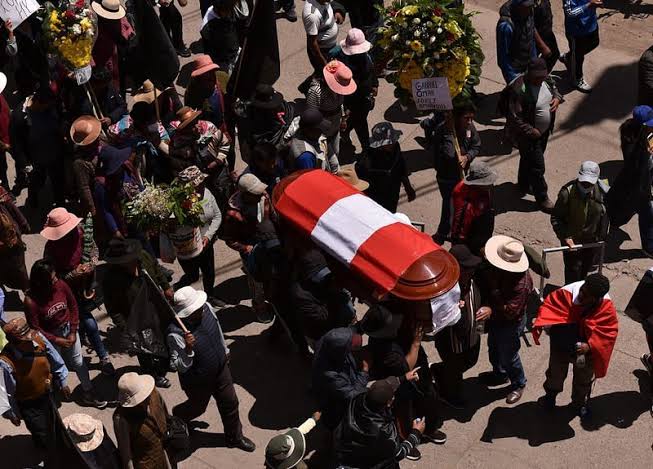The attorney general of Peru has opened 11 investigations to find out who is to blame for the more than thirty deaths, largely of civilians, during the widespread anti-government protests that have engulfed the South American country for more than a month.
The investigations will concentrate on the violent skirmishes between protesters and security personnel in the southern areas of Puno, Cusco, Arequipa, Apurimac, and Ucayali as well as the Peruvian capital, Lima, Patricia Benavides’ office stated on Friday.
At least 41 citizens and one police officer have died as a result of the ongoing turmoil, which was sparked by the resignation of previous left-wing president Pedro Castillo last month.
In advance of the third attempt at impeachment against his embattled presidency, Castillo attempted to “temporarily” dissolve the legislature and rule by decree. On December 7, the opposition-led Congress of Peru voted to remove Castillo from office.
After Castillo’s impeachment, Dina Boluarte, his former vice president, took over.
Protesters have urged Boluarte to resign, and many of them are also calling for early elections and Castillo’s release from pre-trial imprisonment after being accused of “rebellion” and “conspiracy.” He has refuted the accusations.
To quell the demonstrations, the new president proclaimed a 30-day national state of emergency in the middle of December, limiting several civil liberties and allowing the deployment of Peruvian security forces. Additionally, Boluarte has urged “peace, quiet, and unity.”
However, the protests have persisted, and on January 9, the bloodiest day of violence to date, at least 17 protestors were slain in southern Peru.
Authorities have been accused by human rights organizations of firing weapons at demonstrators and dumping smoke bombs from helicopters. The army said that demonstrators had utilized explosives and guns.
After the murders in the south of the country, which is a base of support for Castillo, a former rural teacher and union leader, Amnesty International urged the Peruvian authorities to stop what it called “unnecessary and disproportionate use of force” against civilians on Tuesday.
“It is intolerable that violence is increasing in Peru. The problem is getting worse, according to Marina Navarro, executive director of Amnesty International Peru, because of official repression against protesters and the deaths of people.
Benavidez, the attorney general, opened a preliminary “genocide” investigation on Boluarte and a number of ministers in response to the bloody events.
The 17 victims were also laid to rest on Thursday in Juliaca, a city in southern Puno near to the Bolivian border where demonstrators attempted to take over the airport earlier this week.
“My uncle passed away. Marcos Quispe, who passed away in the violence on Monday, had two bullets in his body, according to his niece Sonia Quispe. “His passing was really heartbreaking. During the fights at the airport, they killed him. Who fired the gun? the authorities
Meanwhile, the protests on Friday disrupted rail and plane connections to Peru’s renowned Machu Picchu location.
Confrontations erupted on Wednesday in Cusco, a hub for travelers to the tourism gem of the nation. While others set fire to a bus stop, destroyed stores, and blocked train tracks with big rocks, protesters tried to approach the airport.
Since the turmoil started, Cusco’s main airport has closed down twice. According to a statement from the railway operator, there are no longer any train links between the city and Machu Picchu due to safety concerns.
According to the attorney general’s office, 329 people have been detained in addition to the 355 citizens and 176 police officers who have been injured thus far in the protests.
Fashion designer Doris Zevallos, who was present during a demonstration against the administration on Thursday in Lima, told the AFP news agency, “There is a lot of outrage, grief, and suffering.”
With our provincial brothers and sisters being slain as they are, a total massacre, Zevallos claimed that “this is creating psychological damage to the entire population, who are aware of what is occurring inside the country.”





